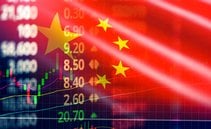If the country wants to reach the 5% growth target in the next ten years with the current model, it can only do so by further wearing down the industrial core of Europe, America, and India.

Today China produces 31% of global manufacturing goods, accounting for 13% of total consumption.
What is the rest of the world doing? It absorbs China’s growing excess capacity. If the country wants to reach the Communist Party’s 5% growth target over the next ten years under the current model, it can only do so by further wearing out the industrial core of Europe, America, and India.
Xi Jinping is not reforming the old model. He is targeting overinvestment in every sector, from clean technology to semiconductors and steel, all tradable goods that end up in global markets, to offset the deflationary housing bubble and prevent youth unemployment from rising further above the threshold. political danger of 20%.
Last month’s central economic conference in Beijing was a gut punch to those who hoped Xi would take steps to end this mercantilist policy.
Instead, there was much talk of “vigorously promoting” further industrialization, underlined by his new mania of “creating the new before abolishing the old.”
Investments already represent 42-44% of GDP. No major country in modern economic history has approached these levels before. Other Asian tigers peaked in the 30s before declining as they matured.
By the end of next year, China will have built enough solar and battery capacity to quadruple the entire global demand for these products in 2022.
China already has enough electric vehicle plants to meet global demand three times over. This glut is hitting foreign markets with disruptive force and at rock-bottom prices. Auto exports increased 84% from January to November.
Xi Jinping loves artificial intelligence, advanced electronics, aerospace, and digital technology (when under total Party control), but he is still flooding the world with low-tech products.
China’s steel exports were nearly 90 million tons last year, equivalent to the combined production of the United Kingdom, Germany, France, Italy and Spain.
China’s current account surplus is officially 2.2% of GDP.
Furthermore, China’s foreign exchange reserves exceed the reported $3 trillion. They are approaching 6 trillion. Large sums are placed abroad through state banks. This suppresses the yuan and gives China an extra edge in global trade.
Its economy is now so large that its $900 billion-a-year surplus of goods is destabilizing world trade
Chinese exports in recent months have been weak in dollar terms, but strong in volume terms. Businesses are escaping the domestic crisis by cutting prices to gain global market share. Or in other words, the country is exporting its deflation on a large scale.
The European Central Bank says Chinese export prices have fallen 6% over the past year in yuan, 12% in dollars, and 18% in euros. This is becoming a serious trade shock for Europe. America defended itself more quickly.
The latest PMI data shows that Chinese companies are further lowering prices as new orders decline.
China risks slipping into a debt-deflation trap in which interest costs rise faster than output in monetary terms, mechanically pushing the debt-to-GDP ratio upwards. Chinese local governments already face annual debt servicing costs of $850 billion.
If China continues with the current strategy, there will be two consequences: the arithmetic of overinvestment will push China’s debt-to-GDP ratio from 300% of GDP to 450-500% within a decade, precipitating a crisis; before that happens, there will be a global trade war, also leading to a crisis.
Original article published on Money.it Italy 2024-01-24 07:00:00. Original title: Ecco come la Cina sta esportando deflazione nel mondo





